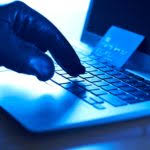Check Fraud Understanding the Rise and How to Prevent It.
Checks may seem like a relic of the past, yet recent reports indicate that check fraud is on the rise. NBC’s Vicky Nguyen recently visited Studio 1A to discuss this pressing issue, outlining the various types of check fraud, its alarming increase, and practical strategies to protect ourselves against it. Here’s a summary of her insights and essential tips to safeguard your finances.
The Growing Threat of Check Fraud
While electronic funds transfers and mobile payments are becoming more prevalent, many individuals and businesses still rely on checks for transactions. Unfortunately, this reliance has made checks a target for fraudsters. According to Nguyen, check fraud can take many forms, including:
- Check Forgery: This occurs when someone alters a genuine check or signs a name that isn’t theirs to cash or deposit it.
- Check Washing: In this method, criminals use chemicals to remove original ink from a check and replace it with their own. This can happen to checks left in unsecured mailboxes or with poor storage.
- Fake Checks: Scammers may create counterfeit checks that are remarkably similar to real ones. Unsuspecting depositors may cash these checks, only to find they are worthless, resulting in financial loss.
- Mail Theft: With checks being sent through the postal service, crooks can easily intercept mail and steal checks intended for others before they are even cashed.
Strategies for Preventing Check Fraud
Awareness is half the battle when it comes to combating check fraud. Here are several strategies discussed by Vicky Nguyen that individuals and businesses can implement to protect themselves:
1. Use Secure Mailbox Systems
Consider using a mailbox that has a locking mechanism to prevent mail theft. Mailboxes that can be accessed only by you can be a great deterrent to criminals seeking to intercept checks.
2. Avoid Leaving Checks in Outgoing Mailboxes
If you need to send a check, avoid using open or easily accessible mailboxes. Instead, take your payments directly to the post office, where they will be securely processed. This prevents check washing or theft during transit.
3. Send Digital Payments
Whenever possible, opt for secure electronic payments instead of checks. Digital payments can often be more secure, allowing you to track your transactions effectively. Consider platforms like Zelle, Venmo, or bank-provided online payment services.
4. Collect Your Mail Frequently
Timely collection of your mail can significantly reduce the risk of fraud. If you’re anticipating checks arriving, make it a habit to pick up your mail daily. This minimizes the window of opportunity for thieves to steal your checks.
5. Monitor Your Accounts Regularly
Stay vigilant by checking your bank statements and online accounts frequently. Look for unauthorized transactions or suspicious activity, and report them immediately.
6. Consider Check Security Features
Using checks that come equipped with security features, such as watermarks or special inks, can help deter fraud. Although these checks come at a higher cost, they can be a worthwhile investment.
Conclusion
As Vicky Nguyen highlighted in her discussion on NBC, check fraud is an evolving threat that requires proactive measures for prevention. By understanding the methods criminals use and implementing smart strategies, we can better protect ourselves and our finances. Ultimately, vigilance and adaptation are essential in combating the rise of check fraud. Together, we can secure our transactions and safeguard our financial well-being in this digital age.








